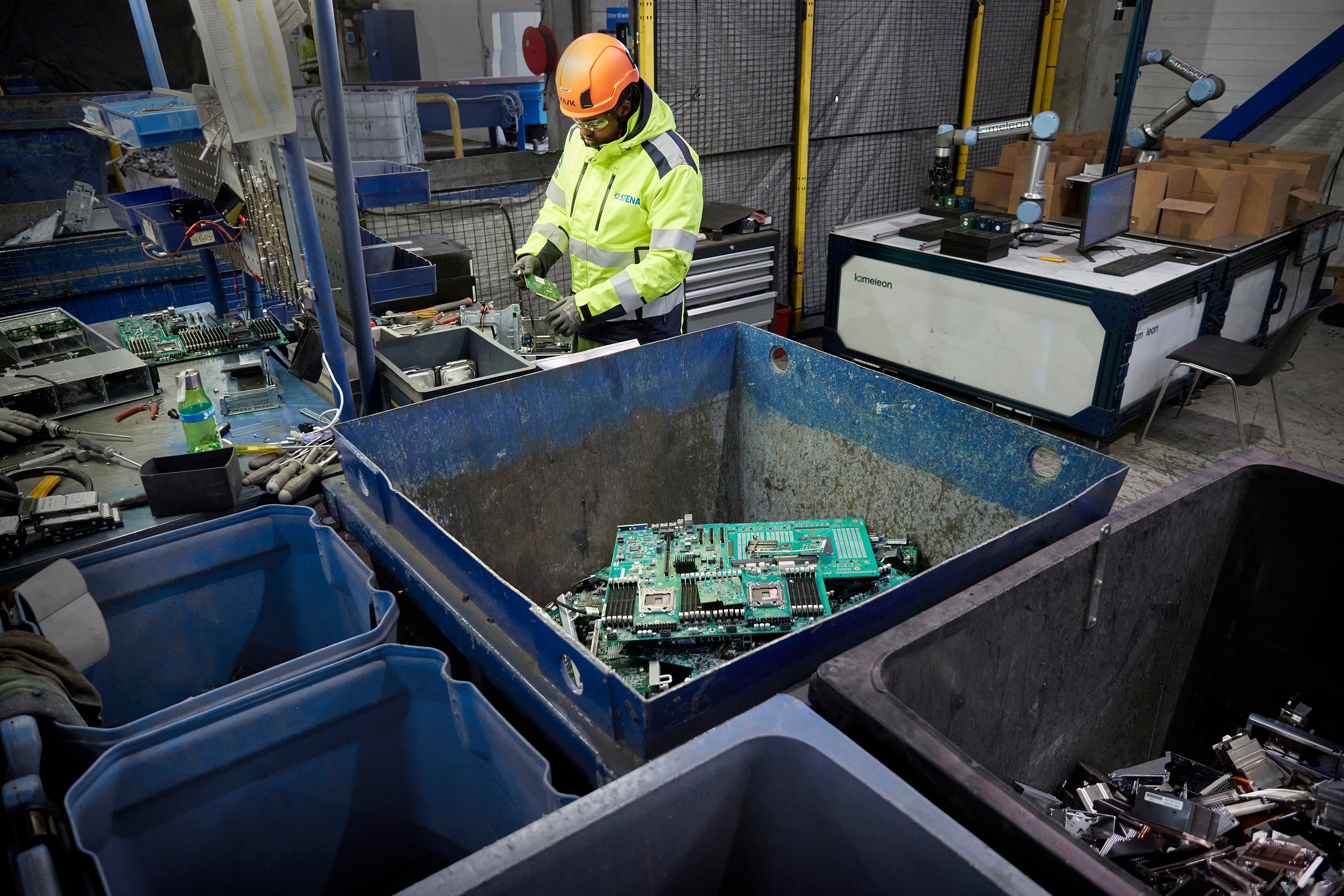9 Simple Techniques For Recycling Lives Services
9 Simple Techniques For Recycling Lives Services
Blog Article
Unknown Facts About Recycling Lives Services
Table of ContentsSome Known Incorrect Statements About Recycling Lives Services The 5-Minute Rule for Recycling Lives ServicesThe Best Strategy To Use For Recycling Lives ServicesFacts About Recycling Lives Services UncoveredRecycling Lives Services Things To Know Before You BuyWhat Does Recycling Lives Services Mean?

E-waste recycling is a lot a lot more difficult than conventional waste recycling. Once e-waste is collected and moved to the recycling facilities, workers arrange the e-waste right into groups according to their types and models.
Here, e-waste is thrown right into a massive device and is shredded into little pieces, but prior to that, it needs to first go via a process called de-manufacturing, which refers to the activity of disassembling an item right into components. https://www.ted.com/profiles/47861351. This treatment is to remove all the potentially dangerous materials in electronic gadgets that will ruin the equipment or infect the setting as soon as got rid of right into land fills
The smart Trick of Recycling Lives Services That Nobody is Talking About

Next, the waste is more separated with water. At this stage, practically every little thing leftover are non-magnetic products; they will undergo another equipment filled up with water, where materials with a reduced family member density, primarily plastic, will move, while various other materials, like glass, will sink. Before recycled products are offered, is to check if there are any type of remaining useful products stuck to the plastic.
See This Report on Recycling Lives Services
Recycling e-waste not only prevents toxic substances from entering our bodies and into the environment, but the process also decreases the unsafe environmental impacts created by the extraction and mining of virgin materials. The prospective economic benefits that can be derived from this sector are substantial. The thrown out e-waste in 2019 alone deserved greater than US$ 57 billion.
Computers and digital devices are made from multiple kinds of plastic, metal, glass and precious steels. Our goal when recycling electronics is to divide the various materials from each various other. The "item" we generate from reusing is tidy apart streams of recycled plastic, iron, steel, copper, light weight aluminum, glass and precious metals.
2-1/2 minute video clip shows electronic official source devices being recycled at a SLS facility. The customer records we are able to create depends on how devices is taken care of prior to being reused.
Recycling Lives Services Things To Know Before You Get This
Our major reusing websites are geared up with automated industrial shredders, conveyor systems and arranging devices. This first step prepares the e-waste to begin the process of separating plastic parts from steel, copper, aluminum, glass and other products.
After shredding, the conveyor belts push the e-waste with magnets, eddy currents, infrared video cameras and air jets. These modern technologies arrange out different material types and separate sorted material from the e-waste stream. Iron and steel is separated from the e-waste, after that aluminum, copper and motherboard are divided. After the bulk metal is removed, the e-waste stream, which is now primarily plastic, is additional separated right into abdominal muscle from polystyrene plastic.
Little Known Questions About Recycling Lives Services.
Dividing Iron and Steel from e-Waste After shredding, conveyor belts transfer the shredded computers and e-waste under an effective magnet, which divides iron and steel from the shredded e-waste (recycling lives services waste management). The steel and iron are gathered in pallet sized bags and planned for sale as reused commodity materials. Dividing Aluminum, Copper and Circuit Boards from e-Waste After passing under the magnet, the e-waste proceeds to relocate using the conveyor belts via additional mechanical separators
An aesthetic evaluation and hand sorting enhances the top quality of the extracted materials. The separated streams of light weight aluminum, copper, and motherboard are collected in pallet sized bags and prepared for sale as reused asset materials. Benefits of Recycling Recycling vs - https://issuu.com/rcyclng1vssvc. Virgin Product The apart products are used to make following generation items
Utilizing recycled material in the manufacturing of new products has benefits that go far beyond product reuse. It lowers pollution and carbon emissions, lowers power and water consumption and keeps helpful products out of garbage dumps. As each product is divided from the e-waste stream, the product is accumulated in pallet sacks or huge cardboard boxes and delivered to an additional cpu or straight to a supplier.
How Recycling Lives Services can Save You Time, Stress, and Money.
It minimizes contamination and carbon emissions, reduces power and water usage and keeps useful materials out of land fills. SLS has earned a credibility of creating excellent quality recyclables out of our facilities. Producers and second cpus seek us out being used our recycled commodities. SLS is at the leading edge of developing cutting-edge e-waste recycling remedies.
Consumers can purchase fewer things while reusing and reusing extra. Federal governments can create e-waste management systems to collect and reuse, removing in a safe method some of the estimated $62.5 billion of value from discarded materials. Ultimately, business can construct products made to last, not to be replaced, and to be reused.
Report this page